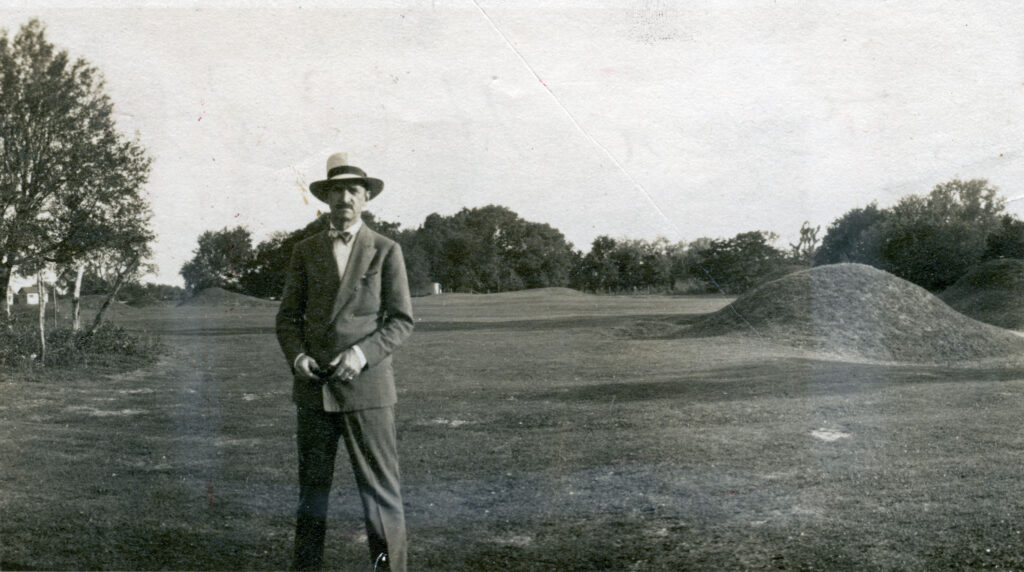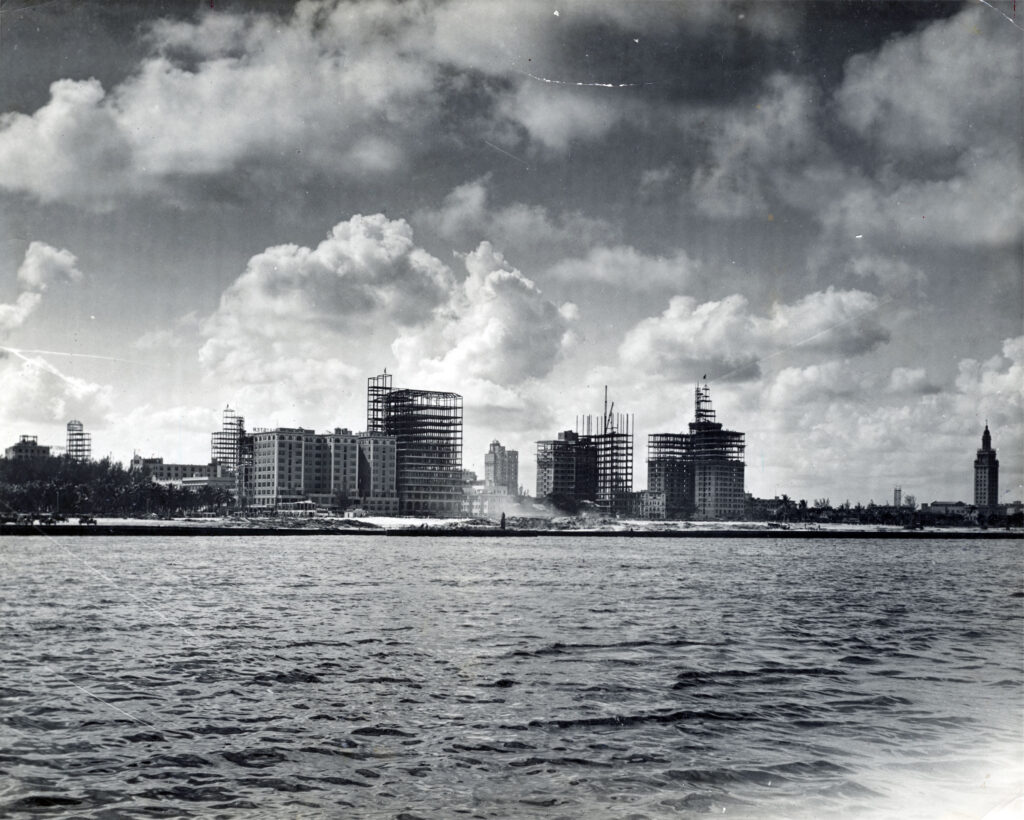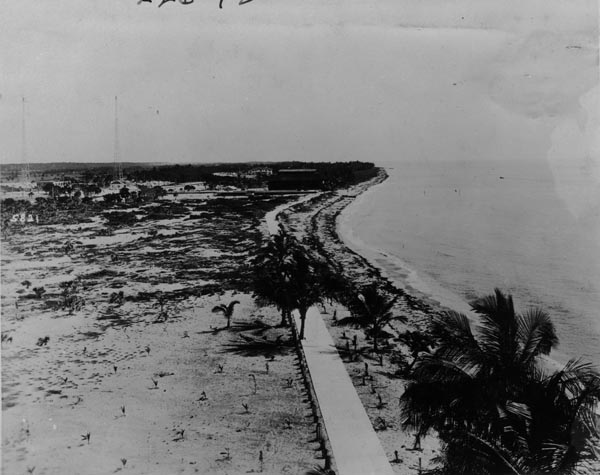By Paul S. George, Ph.D.
The momentum that underlined seemingly all elements of Miami in the early 1900s only grew in intensity as the century’s second decade unfolded. Perhaps the most striking example here was the enormous population growth of Miami, growth assisted by the annexation of areas formerly outside of the city limits, causing the population to expand from 5,500 in 1910 to nearly 30,000 a decade later, the highest per capita increase of any city in the United States.
Often overlooked in the chronicle of Miami in that era was the presence and place of Colored Town, today’s Overtown, amid a city on the rise. Colored Town appeared in the immediate aftermath of the city’s incorporation when land deeds to property within the municipal limits prohibited its sale to Blacks everywhere except for that quarter, located in the northwest quadrant of the nascent city. These restrictions were buttressed by ordinances, state and local, upholding the segregation of the races in accordance with the strictures of Jim Crow, or racial segregation, which had descended over the American South in the final years of the 19th century.
Despite deep pockets of poverty and a glaring absence of municipal services and amenities found elsewhere, this quarter hosted a rich array of enterprises, institutions and activities. Colored Town’s main thoroughfare was Avenue G (Northwest Second Avenue), known as Little Broadway for its profusion of nightclubs and dance halls, a movie theater, and a sparkling roster of renowned Black entertainers who visited and performed in those attractions.
Black Miami grew quickly in the early 1900s, comprising twenty-five to forty percent of Miami’s population in its first generation of existence. Colored Town continued to develop and grow in subsequent decades, reaching its apex in the early years following World War II before experiencing a steep decline beginning in the 1960s for a host of reasons, including the construction of an extensive expressway system that ripped through a broad swath of the quarter and led to the displacement of thousands of residents.

Advertisement for Colored Town Bargain Store. Created in 1904. South Florida Photograph Collection, HistoryMiami Museum archives.
Other parts of Miami also saw great change as the new century unfolded. The number of tourists and new business establishments rose sharply. Twelfth Street, today’s Flagler Street, had, by the early years of the 1900s, eclipsed Avenue D, today’s Miami Avenue, as the city’s most important thoroughfare becoming the address for the city’s leading business establishments. Twelfth Street’s cachet continued to rise with the opening of the Burdine department store’s new five-story building, the city’s first “skyscraper,” in 1912.
Miami was boisterously proud of its growth and accomplishments, typical of young “booster” cities as manifested in an ambitious, 15th birthday celebration in July 1911. The three-day event featured an “aerialist” soaring in a Wright Brothers airplane over a Flagler-built golf course west of Colored Town. For most Miamians, as well as visitors from as far away as Palm Beach County, this event marked their initial glimpse of an airplane. The experience served as a harbinger for the city’s emergence as one of the nation’s early aviation centers, since Miami’s climate, level topography and close proximity to water made it ideally suited for aviation activity., especially of the maritime variety.
Soon after the 15th birthday celebration, Glenn Curtiss, already a famed aviator and a world record holder as an automobile race car driver, arrived and established a flight training school in Allapattah, a rich farming community on the north bank of the Miami River. By the time America entered World War I in 1917, Miami and the surrounding area hosted several flying schools, including a facility near the Miami Canal, west of Miami, that Curtiss operated for future combat pilots in the Great War, and a bustling Naval air station on Dinner Key. The Army opened a gunnery school in deep south Dade.

Glenn Curtiss standing in field. Photo taken in 1925.
Miami was fully invested in the war, later known as World War I. Within one month of America’s entry into the war, thousands of members of Miami’s male population had registered for the draft. Many of the men training in the Magic City would return after the conflict, with wives they had met and married during and after their stay there.
Support for the Allied war cause was exhibited in various ways. Liberty Bond sales, highlighted by persuasive “minutemen,” who delivered short speeches exhorting Miamians to purchase war bonds, nearly always reached their goal. Patriotic parades, a home defense force and other gatherings supportive of the nation’s war effort lit up the city. Armistice Day, November 11, 1918, which marked the end of the conflict with an Allied victory, was, ironically, the most memorable day of the war since an impromptu celebration, beginning in Colored Town and soon blanketing other areas of the city, erupted at dawn with a float bearing the effigy of Kaiser William II, the German emperor, hanging from a noose, cruised through the downtown sector. A Victory Parade and “Short Talks” in Royal Palm Park followed. Finally, a dance finished off the offerings of a day no Miamian of that era would forget.
At the same time, there were many Miamians who were still mending from the effects of influenza as part of a worldwide influenza epidemic that took the lives of scores of millions of persons. Miami was effectively closed for a portion of the autumn of 1918. By the end of October nearly 90 Miamians had lost their lives to influenza. Yet the city’s resilience was again on display on October’s final day, with trick or treaters experiencing a busy Halloween night.
Tourism boomed before and after World War I primarily through the efforts of Everest G. Sewell, a self-taught public relations whiz who headed the Miami Chamber of Commerce’s tourist promotional campaign and, later, the Chamber itself. In the meantime, Carl Fisher, a brash Midwestern millionaire, was planting the seeds of a flourishing tourist community on Miami Beach with his tourist-oriented construction projects and promotion. For the first time the Beach was connected to mainland Miami with the opening of the Collins Bridge in 1913.

Sailors Outside Coconut Grove-Miami Bus. Photo taken in 1917. South Florida Photograph Collection, HistoryMiami Museum archives.
Many prominent Miamians, some in the winter visitors’ category, built large, stately homes along beautiful Brickell Avenue, creating a
“Millionaire’s Row.” The thoroughfare’s most prominent resident was William Jennings Bryan, presidential candidate, U.S. Secretary of State and sterling orator, who regaled crowds in Miami’s Royal Palm Park with his Sunday Bible addresses. Bryan’s beautiful Villa Serena was overshadowed, however, by industrialist James Deering’s nearby Villa Vizcaya, a multi-million dollar Renaissance-era palazzo with rare statuary and other furnishings reaching back through the ages. Spreading over 180 acres of hammock land the complex offered beautiful formal gardens overlooking Biscayne Bay and even a farm and accompanying village, ensuring the self-supporting nature of the estate. Built between 1914 and 1916, Villa Vizcaya employed ten percent of Miami’s population in its construction.
Beyond these seminal homes was a plethora of newly-built, less pretentious buildings. The Miami Herald observed, in 1912, that “a great wave of building prosperity is prevalent everywhere.” By 1916, the value of annual building permits had risen to $2,000,000. Two men who would play major roles in the Florida boom of the 1920s were now involved in the real estate business, namely the aforementioned Carl Fisher, who was bringing Miami Beach into contention as a major tourist resort, and George Merrick, the son of a Congregational minister, who, along with his family, was farming in the piney woods of today’s Coral Gables. There he realized great success, but by the late 1910s, was preparing to transform his vast holdings into a beautiful Mediterranean-styled city.
Miami was already booming when the Roaring Twenties began. The city’s population, as noted, had climbed to nearly 30,000. Its expanding borders now extended for a significant distance beyond its original western and northern parameters. Even beyond the new municipal borders significant growth was taking place.
At the outset of the 1920s, The Miami Herald marveled at the “astounding growth of Miami as a tourist center.” In the following year, the Royal Palm Hotel served an estimated 35,000 guests. Increasing numbers of tourists now remained in the area after the winter season had ended, many becoming permanent residents. But this growth would pale by comparison with what lay ahead—with the onset of the great real estate boom of the mid-1920s, one of the seminal eras in the area’s history.

View across Biscayne Bay shows the skeletal frame of new buildings rising above the ten-story McAllister Hotel. Photo taken in 1925. Gleason Waite Romer, photographer. HistoryMiami Museum archives.

